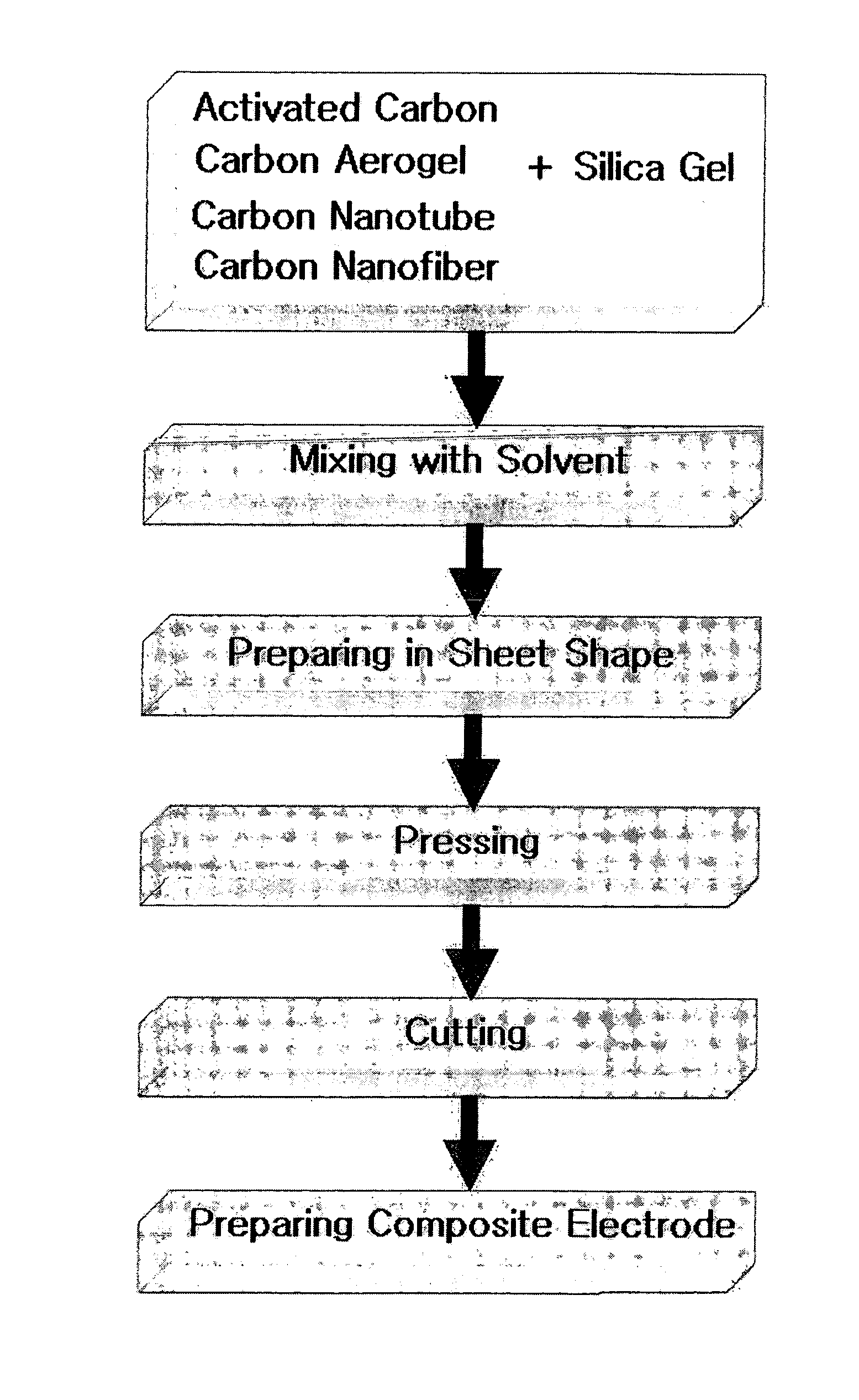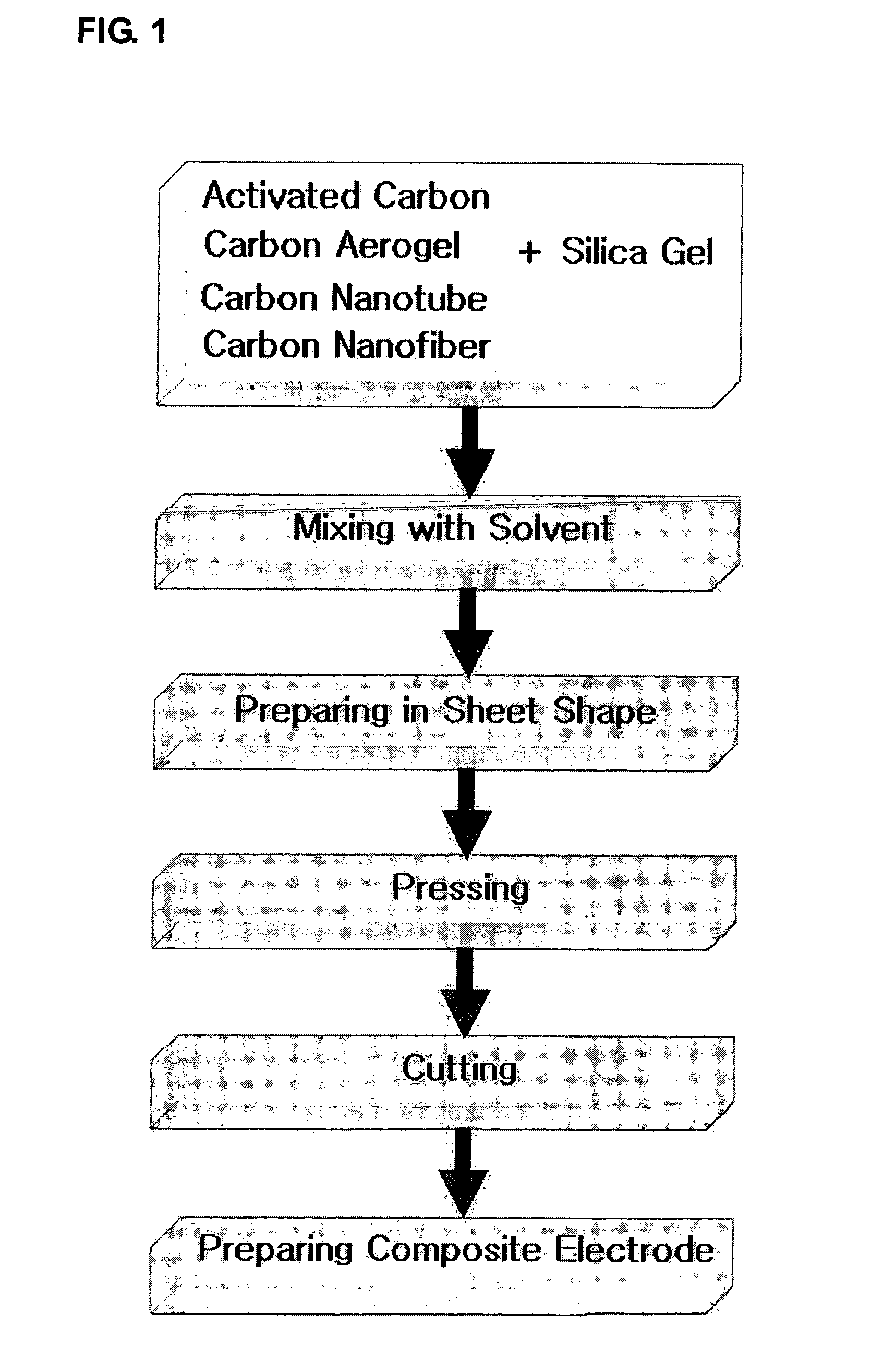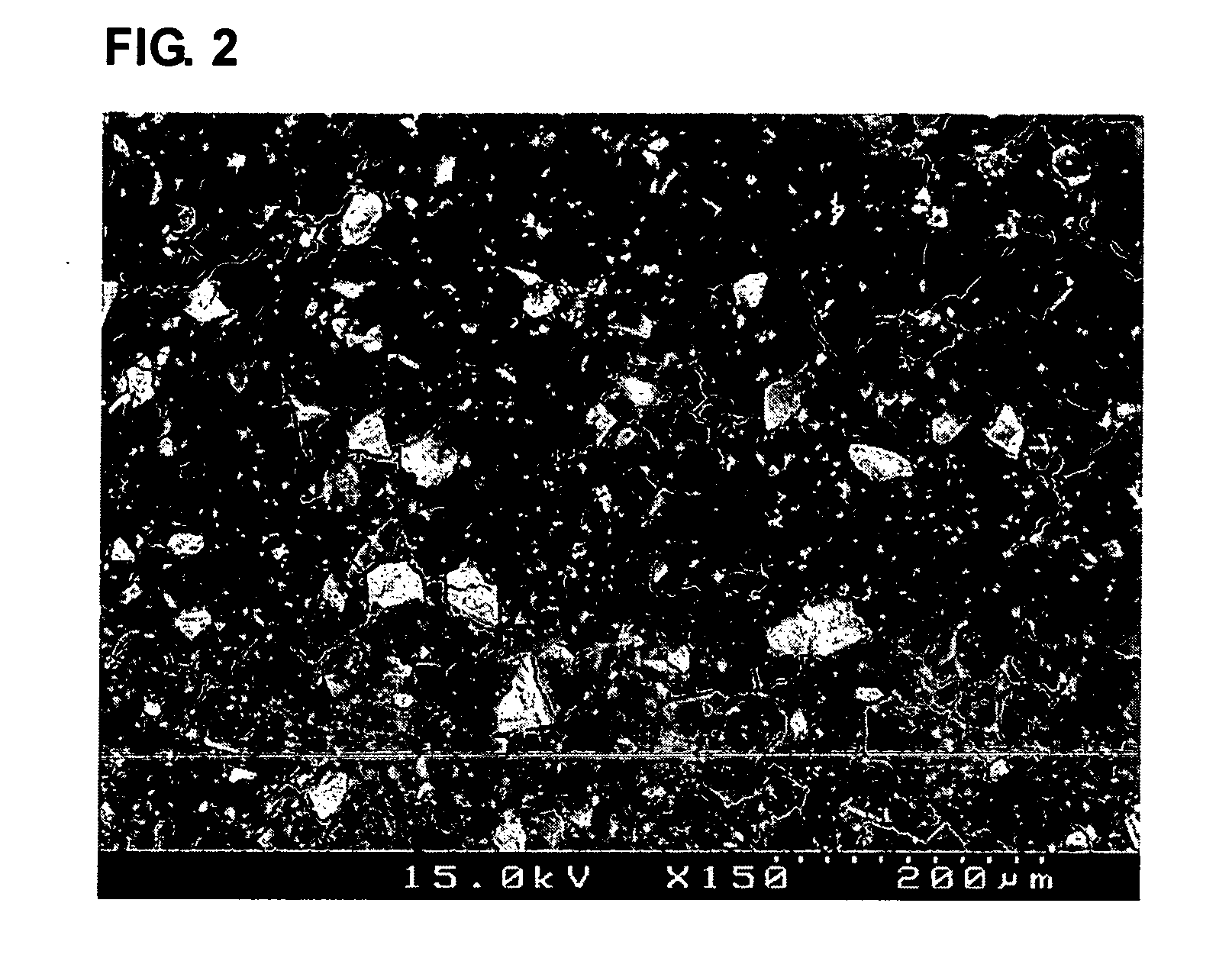Carbon-porous media composite electrode and preparation method thereof
a composite electrode and porous media technology, applied in the field of carbonporous media composite electrode materials, can solve the problems of difficult use, rare wetting ability, high cost of carbon nanotubes, etc., and achieve excellent hydrophilicity, mechanical strength and cdi properties, and simple process
- Summary
- Abstract
- Description
- Claims
- Application Information
AI Technical Summary
Benefits of technology
Problems solved by technology
Method used
Image
Examples
example 1
[0043] 3 g of carbon aerogel dried for at least 24 hours at 80° C., 1 g of acetylene black (moisture content: 0.03 % by weight; ash content: 0.001 % by weight; bulk density: 12.9 lbsft−3; actual density: 1.95 g / ml; surface area: 80 g2m−1; available from Osaka Gas Co.), 1 g of porous silica gel (231-5454, 0.040-0.063 mm, available from Lancaster Co.), 0.25 g of PTFE and 5 g of ethyl alcohol were mixed. The resulting mixture was uniformly stirred for one hour at room temperature. The resultant was then made into a sheet from fibers formed by kneading them while evaporating an ethyl alcohol solvent.
[0044] The composite electrode material obtained was then pressed onto a nickel foam to obtain a composite electrode, which was then used to assemble a battery by constructing in the form of a porous composite electrode / non-woven fabric / porous composite electrode. This battery was put into a water cistern containing 1,000 ppm aqueous NaCl solution, charged up to 0.9V for 10 minutes, dischar...
example 2
[0045] 2 g of carbon aerogel dried for at least 24 hours at 80° C., 1 g of acetylene black (moisture content: 0.03% by weight; ash content: 0.001% by weight; bulk density: 12.9 lbsft−3; actual density: 1.95 g / ml; surface area: 80 g2m−1, available from Osaka Gas Co.), 2 g of porous silica gel (231-545-4, 0.040-0.063 mm, available from Lancaster Co.), 0.25 g of PTFE and 5 g of ethyl alcohol were mixed. The resulting mixture was uniformly stirred for one hour at room temperature, and then made into a sheet from fibers formed by kneading them while evaporating an ethyl alcohol solvent.
[0046] The composite electrode material obtained was then pressed onto a nickel foam to obtain a composite electrode, which was then used to assemble a battery by constructing in the form of a porous composite electrode / non-woven fabric / porous composite electrode. This battery was put into a water cistern containing 1,000 ppm aqueous NaCl solution, charged up to 0.9V for 10 minutes, discharged down to −0....
example 3
[0047] 1 g of carbon aerogel dried for at least 24 hours at 80° C., 1 g of acetylene black (moisture content: 0.03% by weight; ash content: 0.001% by weight; bulk density: 12.9 lbsft−3; actual density: 1.95 g / ml; surface area: 80 g2m−1, available from Osaka Gas Co.) as a conductive material for improving conductivity, 3 g of porous silica gel (231-545-4, 0.040-0.063 mm, available from Lancaster Co.), 0.25 g of PTFE and 5 g of ethyl alcohol were mixed. The resulting mixture was uniformly stirred for one hour at room temperature, and then made into a sheet from fibers formed by kneading them while evaporating an ethyl alcohol solvent.
[0048] The composite electrode material obtained was then pressed onto a nickel foam to obtain a composite electrode, which was then used to assemble a battery by constructing in the form of a porous composite electrode / non-woven fabric / porous composite electrode. This battery was put into a water cistern containing 1,000 ppm aqueous NaCl solution, charg...
PUM
| Property | Measurement | Unit |
|---|---|---|
| particle size distribution | aaaaa | aaaaa |
| particle density | aaaaa | aaaaa |
| particle size distribution | aaaaa | aaaaa |
Abstract
Description
Claims
Application Information
 Login to View More
Login to View More - R&D
- Intellectual Property
- Life Sciences
- Materials
- Tech Scout
- Unparalleled Data Quality
- Higher Quality Content
- 60% Fewer Hallucinations
Browse by: Latest US Patents, China's latest patents, Technical Efficacy Thesaurus, Application Domain, Technology Topic, Popular Technical Reports.
© 2025 PatSnap. All rights reserved.Legal|Privacy policy|Modern Slavery Act Transparency Statement|Sitemap|About US| Contact US: help@patsnap.com



